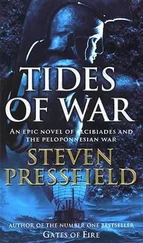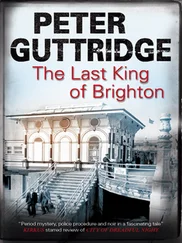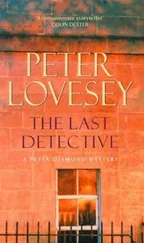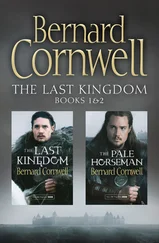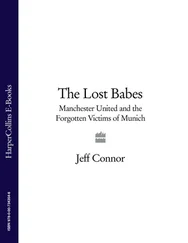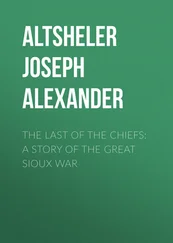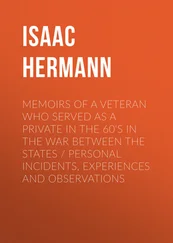The four sets of remains were placed in the corrugated-iron chapel at the cemetery of St-Pol-sur-Ternoise and each draped with the Union flag. Sentries were posted at the chapel doors and Brigadier-General Wyatt, accompanied by one of his staff, a Colonel Gell, selected one of the bodies at random. One story that had wide circulation was that the Brigadier-General was blindfolded, but this would have been both unnecessary and unbecoming to his exalted rank. Once the body had been chosen, it was placed in a plain coffin and, after an ecumenical (though Christian) service the following morning, was taken by field ambulance to Boulogne to lie in the chapelle ardente of the castle there. A French guard of honour stood beside the coffin that night, and the following morning a pair of British undertakers arrived, bringing with them a specially designed casket made of oak that had grown in the grounds of Hampton Court. It was bound with bands of studded wrought iron made in the foundries of Wales, and a crusader’s sword donated from the royal collection at Windsor was held in place on the lid by an iron shield on which was inscribed:
A British Warrior who fell in the Great War 1914–1918 for King and Country
The plain coffin was placed inside this elaborate box, which on the morning of 9 November was taken by horse-drawn hearse, through guards of honour and to the sound of tolling bells and bugle calls, to the quayside. There, saluted by Maréchal Foch, it was loaded on to the destroyer HMS Verdun, which would carry it across the Channel to Dover. The coffin stood on the deck, covered in wreaths and surrounded by a French guard of honour, as the ship moved slowly out of the harbour.
The sight of HMS Verdun emerging from the heavy fog that hung over the Channel as it reached Dover inspired one musical student to compose a tone poem on the subject. Lilian Elkington’s atmospheric Out of the Mist received its first performance at a student concert in Birmingham later that year. ‘The opening is quiet, with muted lower strings, as the ship feels her way through the murk,’ the composer wrote in a programme note. ‘After a pause mutes are removed, the air grows brighter, and the deep gloom upon men’s spirits is somewhat relieved … Gradually the style enlarges and becomes more elevated as larger views of the meaning of sacrifice calm the spirit.’ The final section of the work is marked double-forte ‘as with a burst of sad exultation the representative of the nameless thousands who have died in the common cause is brought out of the darkness to his own’. This description exactly captures the mood of the country when the Unknown Warrior came home. He was greeted at Dover with the nineteen-gun salute usually reserved for field marshals and then handed over by the French to a British honour guard, which accompanied the coffin to the railway station to complete the journey to London by special train. All along the route people gathered to watch the train pass, and assorted uniformed groups stood on station platforms to salute its by now famous, though of course still anonymous, passenger. Even larger crowds, many of them women in mourning, greeted the train when it arrived at Victoria Station, where the Unknown Warrior remained overnight.
Many of these people followed the coffin to Westminster Abbey on the morning of 11 November, tagging along behind the official escort. Draped with a Union flag that had been used by David Railton as an altar cloth at the front, on top of which were placed an infantryman’s helmet, belt and bayonet, the coffin had been loaded on to a gun carriage pulled by six black horses. Marching in front of the carriage were a firing party, and massed bands playing Chopin’s funeral march. Immediately behind came the twelve pall-bearers, selected from among the highest-ranking officers in the land: Earl Haig, Earl Beatty and Air Marshal Sir Hugh Trenchard representing the army, navy and air force respectively, along with three other Admirals of the Fleet, three more generals and three more field marshals, including Sir John French who had commanded the British Expeditionary Force until relieved of his position in December 1915. These men were followed by representatives of the army, navy and air force, selected from all ranks, marching six abreast and all wearing black-crêpe armbands; then former servicemen, in mufti, marching four abreast. The procession made its slow way through the streets of the capital, which were lined with troops posted to hold back the mourners who, dressed in black, thronged the pavements and fell silent as the gun carriage passed.
Eventually the procession turned into Whitehall, where the new Cenotaph was concealed under huge Union flags. Although the proceedings had a more military flavour than those on Armistice Day the previous year, the focus remained on those who mourned rather than on those who had fought and survived. A group of unemployed ex-servicemen had even been denied permission to join the funeral procession, perhaps as a result of the various demonstrations, some of them violent, in which many out-of-work veterans had participated during the two years since the war ended. Apart from a specially allocated block where 130 ‘Distinguished Personages’ waited, the pavements of Whitehall nearest the Cenotaph had been reserved for the ‘Bereaved’, selected by ballot and guarded by a line of servicemen from all three forces. With ten minutes to go to the eleventh hour, the gun carriage stopped beside Lutyens’ shrouded monument so that the King, in military uniform, could place a wreath upon the coffin, salute and retire. A choir arrayed on either side of the entrance to the Home Office building directly opposite the Cenotaph sang the hymn ‘Oh God, Our Help in Ages Past’, then the Archbishop of Canterbury said the Lord’s Prayer. On the first stroke of eleven, the King stepped forward again to unveil the Cenotaph. There followed a two minutes’ silence that was supposedly observed throughout the entire British Empire – though it seems unlikely that those tilling fields or hawking goods under a hot afternoon sun in some of the remoter corners of the Empire could even have known what was taking place in the tiny island kingdom that ruled them, let alone participated in this arcane ceremony. In most countries that had fought in the war, however, silence was observed. A notable exception was the United States, where Armistice Day was largely ignored. A year later the Americans would exhume and bury their own Unknown Soldier and mark 11 November as Veterans Day, but in 1920 people went about their normal business without interruption. Throughout Britain, however, the silence that reigned was as remarkable in its way as the one that fell across the battlefields of France and Belgium exactly two years earlier. At the Cenotaph, the end of the two minutes was signalled by eight buglers playing the Last Post, after which the King and other dignitaries placed wreaths at the foot of Lutyens’ empty tomb, then followed the gun carriage to Westminster Abbey, from the tower of which a single bell tolled.
The nave of the Abbey was lined by 100 men who had been awarded the VC and other high military honours, but following a press campaign and a personal plea from Queen Mary the majority of the public invited to attend the service were bereaved women who had lost either a husband or a son, or (as was all too often the case) both. The Dean of Westminster conducted the brief service, during which the casket of the Unknown Warrior was lowered into the tomb excavated for it in the floor of the nave just inside the West Door. Like the Cenotaph, the grave had been sited where people were obliged to take notice of it, in the middle of a thoroughfare: anyone entering the Abbey would have to step round it. In a reversal of Rupert Brooke’s famous notion of ‘some corner of a foreign field/That is for ever England’ because a British soldier was buried there, quantities of earth had been imported from the battlefields so that the Unknown Warrior would lie in the French and Belgian soil over which he had fought.
Читать дальше

